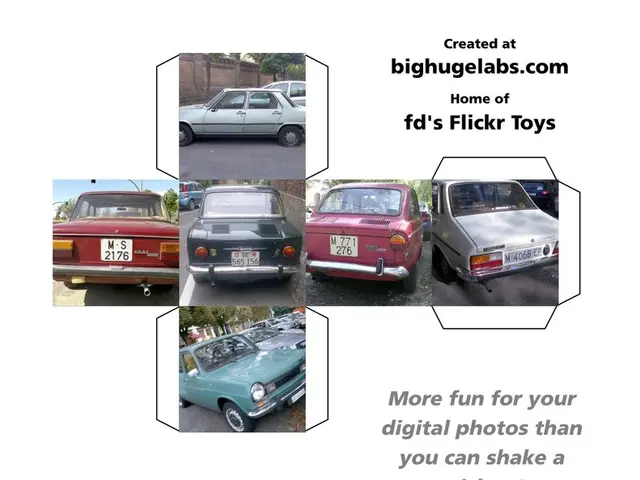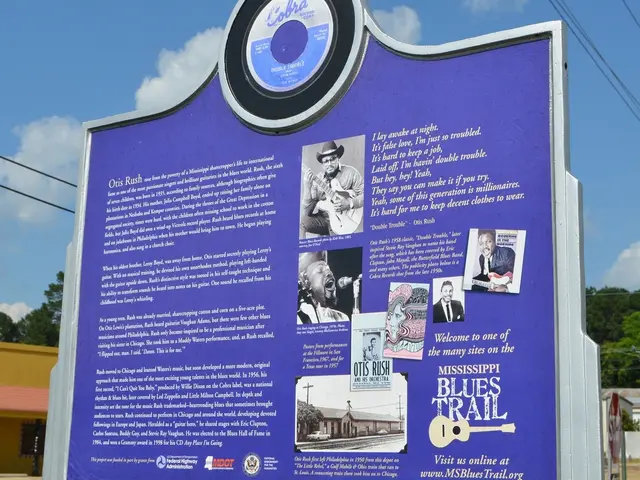Autonomous trucks make significant stride in driverless technology advancement within Texas
In the world of transportation, autonomous vehicles are making significant strides. One startup, Aurora Innovation, is leading the charge with its self-driving 18-wheeler trucks, now operating on Texas highways at night for cargo transportation.
These autonomous trucks, equipped with Aurora's advanced LiDAR system, boast superior long-range object detection at night. This capability allows them to identify pedestrians, vehicles, debris, and other obstacles up to 11 seconds quicker than a human driver, providing faster reaction times and significantly improving safety, especially during low visibility conditions.
The startup's proprietary long-range FirstLight LiDAR system, capable of detecting objects over 450 to 500 meters (about 492 to 547 yards) ahead, even in complete darkness, is a key factor in this enhanced safety. This early detection gives the autonomous system up to 11 seconds more reaction time compared to a human driver.
By enabling safe operation during nighttime, Aurora's system effectively doubles truck utilization, allowing freight to be moved continuously rather than being limited by human driving hours-of-service restrictions. This not only improves efficiency but also reduces the risk of accidents, contributing to better safety records in areas such as Texas, which has historically led in fatal large truck crashes.
Aurora's autonomous trucks, operated on routes like Dallas-to-Houston, are currently running fully autonomously, with safety operators present as observers. The company's trucks are also operating in Dallas, Houston, Atlanta, and Oklahoma City, but these vehicles have drivers on board at night.
The use of autonomous trucks for less attractive routes could win over younger workers who want more of a work-life balance with more predictable schedules. Human drivers could take on shorter, less strenuous routes while self-driving trucks handle the long hauls, according to Richard Stocking, chief executive of Hirshback Motor Lines in Iowa.
However, concerns about the safety of autonomous trucks during severe storms and winter conditions persist. Troy Turnham, a truck driver, expressed his apprehensions about these conditions. Aurora is working on perfecting its autonomous driving capabilities in the rain. The trucks do not start any trips if the weather seems troublesome from the outset, but they are programmed to execute a pull to shoulder if it does start to rain.
The advent of autonomous trucks could potentially lead to changes in federal laws regulating long-haul truckers' time on the road. Proponents argue that these could change, allowing for more efficient operation of these vehicles.
Aurora's LiDAR system allows their trucks to spot pedestrians, other vehicles, and debris on the road about three football fields away. The company's autonomous trucks are currently delivering loads of sand on leased roads, not highways, and have completed more than 20,000 miles since they started on public roads in May across three trucks.
Kodiak Robotics has also started operating driverless trucks at night in parts of West Texas and Eastern New Mexico. As autonomous trucks continue to prove their efficiency and safety benefits, we can expect to see more of them on our highways in the future.
- The advancements in technology, such as Aurora's FirstLight LiDAR system, are revolutionizing the automotive industry, particularly in transportation, enabling autonomous vehicles to outperform human drivers in long-range object detection during night conditions.
- The enhanced safety features provided by these autonomous systems could lead to a reevaluation of finance and industry regulations, such as federal laws regulating long-haul truckers' time on the road, potentially paving the way for more efficient operations.
- As technology continues to evolve, companies like Aurora and Kodiak Robotics are pushing the boundaries of what autonomous vehicles can achieve, delivering cargo and even operating on roads during rainy weather, hinting at a future where self-driving trucks could become a common sight on our highways.




